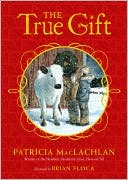Tiger Math: Learning to Graph from a Baby Tiger
This innovative book uses graphs to tell the story of T.J., a Siberian tiger cub born at the Denver Zoo. T.J. is orphaned when he is just a few weeks old. At first he refuses to eat his new food, and the zoo staff worries. If the baby tiger doesn't start to eat soon, he will starve. But the staff refuses to give up, and finally their love and persistence pay off: T.J. grows into a huge, beautiful, and very healthy tiger. \ T.J.'s fight for survival is both a heartwarming story and an...
Search in google:
Learn to graph while following the growth of T.J., an orphaned Siberian tiger cub who is hand-raised at the Denver Zoo.T.J. is a Siberian tiger cub born at the Denver Zoo. One day he stops eating. The zoo staff tries to tempt him with treats, but he refuses them all. The staff doesn't give up, and finally their love and persistence pay off. T.J. grows up to be a huge, healthy tiger.The delightful pictures of T.J. and the heartwarming story of his life will charm young readers as they learn the basics of graphing. Those who like storybooks can read just the right-hand pages of this book. But those who want to know more can use the graphs on the left-hand pages to see exactly how T.J. grew.Children's LiteratureHere are two books in one. The true story of T.J., a Siberian tiger born at the Denver Zoo, and his growth are fascinatingly detailed from his precarious infancy to maturity. While this tale is told on the right-hand pages, facts about tigers in general and T.J. in particular are clearly presented on the other side in the form of different kinds of graphs--bar graphs, plotted graphs, and pie graphs. Kids can learn so much from reading either side. The many clear color photographs, including ten on front and back endpapers, tell the story of T.J. from endearing cub to eventual, formidable 500 pound adult. 2000, Henry Holt and Company, Ages 6 to 10, $16.00. Reviewer: Ken Marantz and Sylvia Marantz
\ Children's LiteratureHere are two books in one. The true story of T.J., a Siberian tiger born at the Denver Zoo, and his growth are fascinatingly detailed from his precarious infancy to maturity. While this tale is told on the right-hand pages, facts about tigers in general and T.J. in particular are clearly presented on the other side in the form of different kinds of graphs--bar graphs, plotted graphs, and pie graphs. Kids can learn so much from reading either side. The many clear color photographs, including ten on front and back endpapers, tell the story of T.J. from endearing cub to eventual, formidable 500 pound adult. 2000, Henry Holt and Company, Ages 6 to 10, $16.00. Reviewer: Ken Marantz and Sylvia Marantz\ \ \ \ \ School Library JournalGr 1-4-T.J., a Siberian tiger cub born at the Denver Zoo, is orphaned when he is only a few weeks old. The veterinary staff raises him, feeding him by hand until he is able to eat on his own and be returned to the tiger exhibit. The story is accompanied by graphs on facing pages that chart T.J.'s growth, successfully showing math in "real world" terms. The first charts show how few Siberian tigers remain in the wild and in captivity, helping to establish the importance of saving this one. The doctors need to know how much the young animal eats and how much weight he gains in order to make sure he is healthy. Easy-to-understand picture, pie or circle, bar, or line graphs, all with explanations, appear on the left; facing pages of text and clear full-color photographs are on the right. The photos and story portray T.J. as cuddly and friendly, playing hide-and-seek with his human keepers and pouncing on them for fun. However, since few children will have the opportunity to interact with a tiger cub, the safety concern is minimal. Overall, an innovative approach to teaching math.-Lucinda Snyder Whitehurst, St. Christopher's School, Richmond, VA Copyright 2000 Cahners Business Information.\ \ \ Kirkus ReviewsA true story of a baby tiger's brush with death from starvation is an opportunity for learning about graphs. T.J., a Siberian Tiger born at the Denver Zoo, stopped eating after the sudden death of his mother. The staff tried offering all sorts of tempting food to whet his appetite, but he refused everything. After five days, they had no choice but to force-feed him by putting food at the back of his tongue and using a stick to push the meat in. After 11 days, the cub began to eat and now is larger than his father. T.J.'s story is written on the right-hand pages of the book and the graphs and their explanations are on the left. The reader can read the complete story without referring to the left-hand pages that contain the graphs and the additional text that explains them. Different kinds of graphs track a variety of data. A bar graph measures how much meat T.J. ate each day. A line graph shows T.J.'s weight loss. A picture graph compares tigers in the wild, and a circle graph shows the same information in another form. Interesting photographs taken at the Denver Zoo detail every aspect of the story. They show T.J. as a three-pound cub with his mother. When he needs hospitalization, they show how he is force-fed. As he recovers, photos show him playing with zoo staff, and finally as an adult sitting in his pool at ZooMontana. A delightful way to learn math. (Nonfiction. 8-10)\ \ \ \ \ From the Publisher\ "A delightful way to learn math." --Kirkus Reviews\ "An innovative approach to teaching math." --School Library Journal\ "Nagda has paved an inviting path to the skill of graph interpretation, and T.J.'s story will beckon even the math-reluctant to follow." --Bulletin of the Center for Children's Books\ \ \ \








